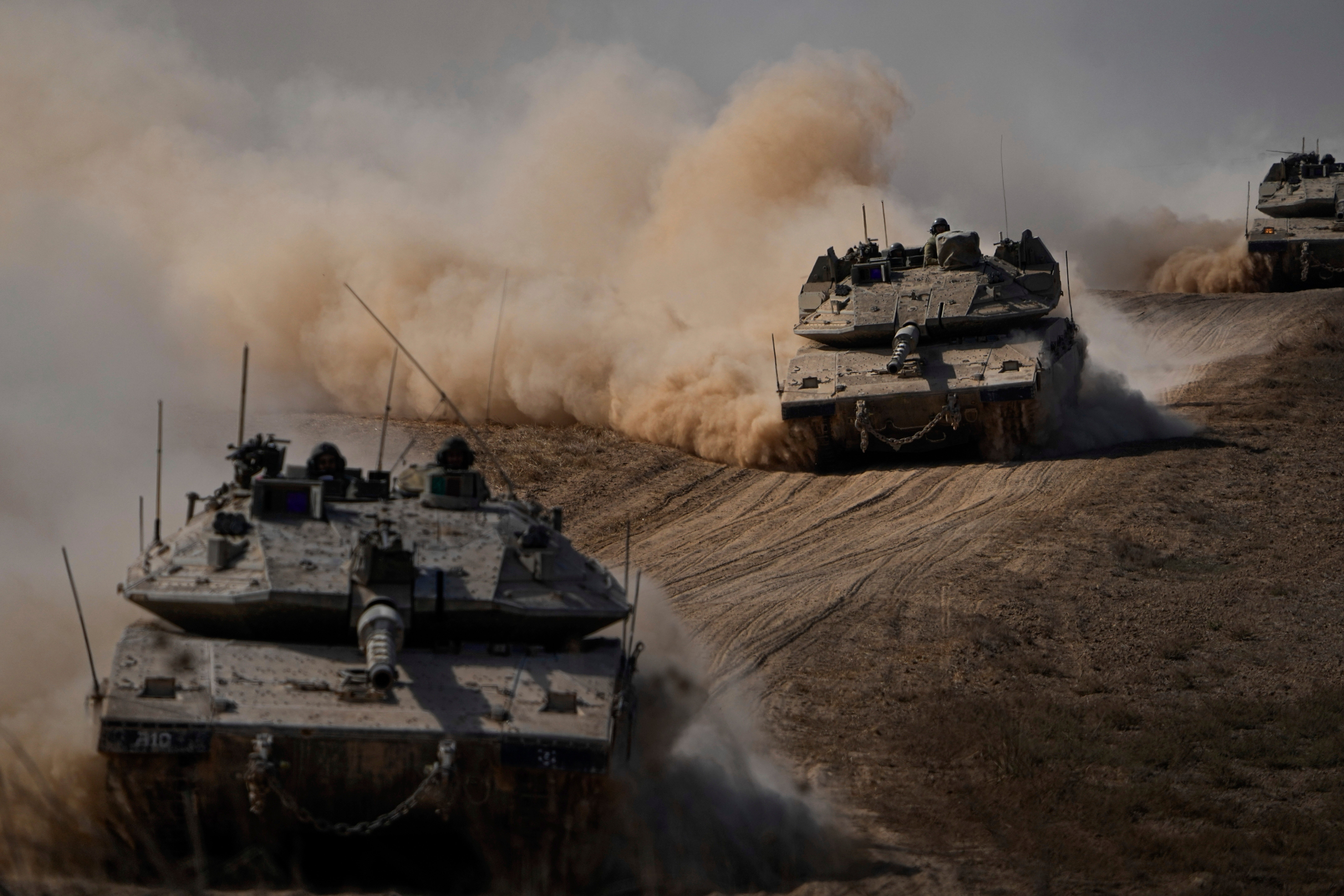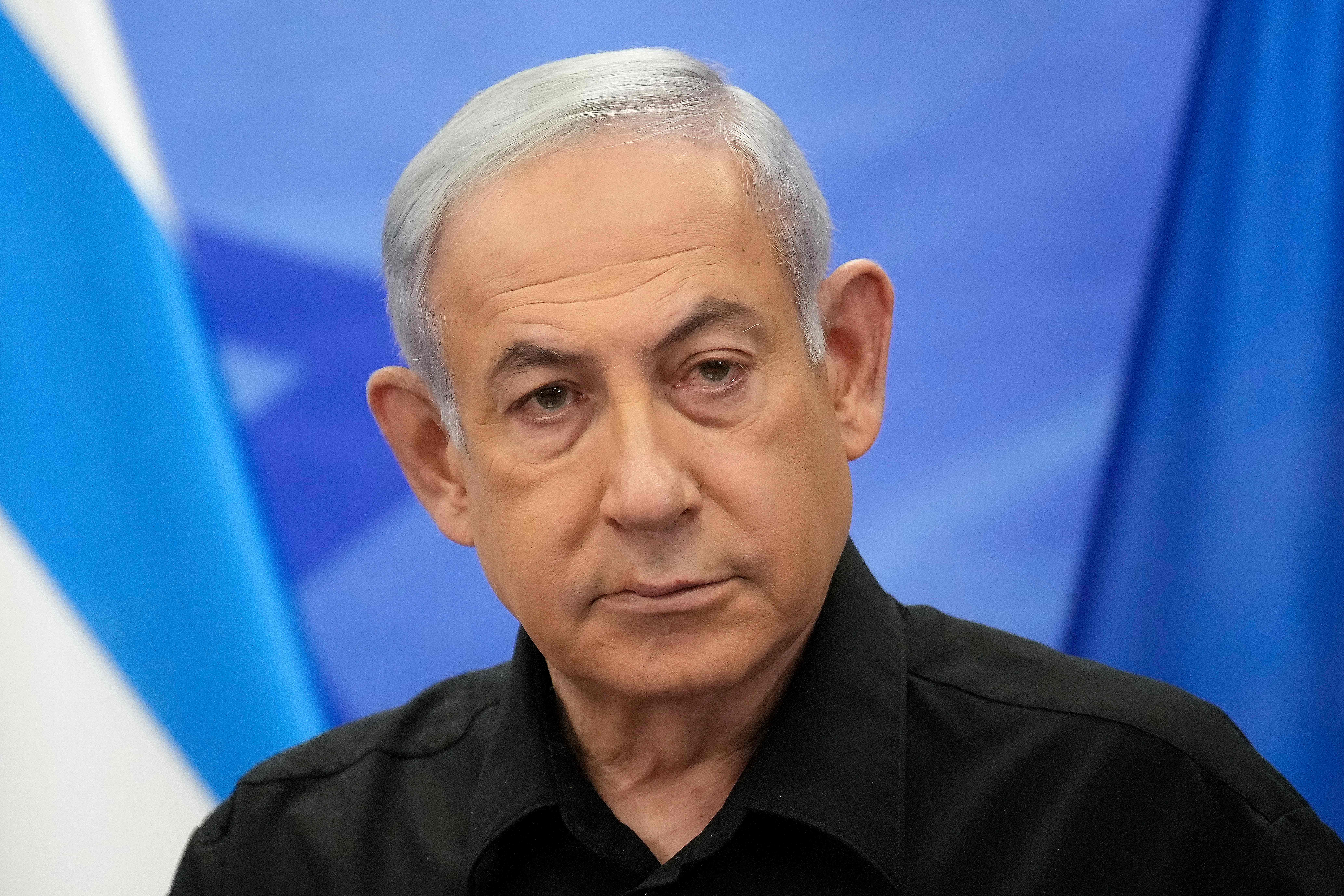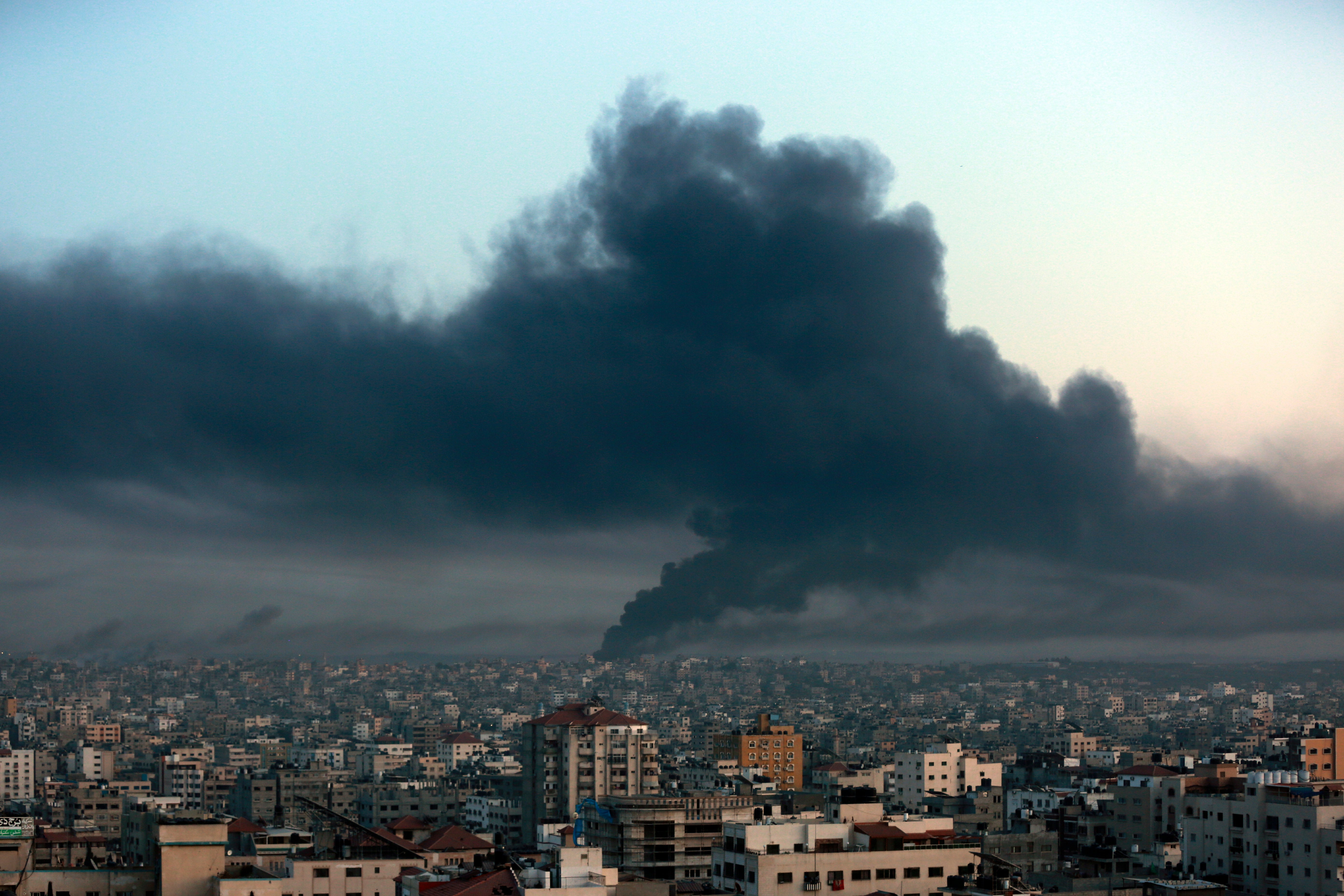The delays, doubts and diplomacy around an Israeli invasion of Gaza: ‘Full throttle will be costly’
While troops are conducting raids backed by tanks and armoured bulldozers, and Benjamin Netanyahu is talking up the prospect of a full-scale ground assault, the picture is more complicated – and uncertain, writes Kim Sengupta


The Israeli raid into Gaza was not unexpected, such probing operations are normal tactics before a large-scale offensive. The aim is to degrade the enemy’s capabilities in sections of the battlespace by destroying defensive positions, including ambush points, sweeping for mines and boobytraps and killing combatants.
The operation was, however, widely publicised, with the Israel Defence Forces (IDF) issuing videos of columns of Merkava tanks entering the territory with drones flying overhead. Also in the imagery were Caterpillar D9 armoured bulldozers which will play a highly important role in what is likely to lie ahead.
The incursion took place just after the prime minister Binyamin Netanyahu had announced that Israel was determined on a full-scale ground invasion. That speech came after reports began to surface that his government has had to delay the offensive to allow the Pentagon the time to place air defences in military bases in the Middle East which have come under attack following the Israeli bombardment of Gaza.
At the same time, there have been concerted messages from the West to postpone major military action until the 224 hostages being held by Hamas are freed. At least half the captives are said to be dual nationals. A senior negotiator for Qatar, the main conduit for negotiations with Hamas, claimed all the hostages may be released in days if there was a pause in the fighting, but there is no sign of such a pause taking place at present. There is also growing pressure from the international community and the UN to allow aid to get into Gaza to deal with a humanitarian catastrophe.
Mr Netanyahu insisted in his address that it was he and his cabinet who would make the decisions on the invasion. But he refused to say how and when it will take place.

If the wait is purely for the American protective measures then it could only be until the end of this week; these are supposed to be installed by then. But is that the only factor? There are also claims that Israel still does not have enough mine-resistant ambush protection (MRAP) armoured carriers and joint direct action munition (JDAM) bunker-busting bombs for the prolonged conflict expected in the territory.
It has also been claimed that the administration of Joe Biden has doubts over whether Israel has a strategy in place to launch a ground invasion with a cogent endgame. The New York Times reported that the US defence secretary, Lloyd Austin, has told his Israeli counterpart, Yoav Gallant, of the huge difficulties of urban combat in a densely populated area. He has also stressed the need to minimise civilian collateral damage when the mission takes place.
US Marine Corps lieutenant general James Glynn has been sent to Israel, leading a team of senior officers, to discuss the issues involved. Recent urban counterinsurgency operations by the Americans and the British, in Syria and Iraq against Isis in 2016 and 2017, are said to have been discussed by the two sides, along with the one in Fallujah in 2004 during the Iraq war.
General Austin was head of US Central Command (Centcom) when the operations backing Iraqi and Kurdish forces took place in 2016-17. He told ABC News: “The first thing that everyone should know, and I think everyone does know, is that urban combat is extremely difficult.”
Gen Austin stressed that he had “encouraged” Mr Gallant to “conduct their operations in accordance with the law of war”. He added: “One of the things we’ve learned is how to account for civilians in the battlespace, and they are a part of the battlespace, and, in accordance [with] the law of war, we’ve got to do what’s necessary to protect those civilians.”

This reflects American concern that ground operations in Gaza will add enormously to the civilian death toll which is already at more than 7,000 according to the Palestinian health ministry. The Israeli military, meanwhile, has reportedly loosened its rules of engagement for the Gaza offensive.
The rising toll of death has led to outrage among the populations in Arab states. American officials are deeply concerned that the initial unequivocal endorsement by the Biden administration of Israeli action has led to a fierce backlash. “Death to America” is a chant being heard again after many years, even in the streets of close allies like Bahrain, where the US has a large naval base.
American, British and Iraqi troops stormed Fallujah with armour and airstrikes in 2004, whereas the Raqqa and Mosul operations were carried out with Western Special Forces and airstrikes supporting Iraqi and Kurdish forces.
Both approaches will result in casualties among Israeli troops and civilians. But a number of American, British and other Western officials hold that the way it was done in Mosul and Raqqa, with the addition of limited armour in Gaza, would lessen the numbers of dead and wounded.
However, with the Israeli government having already stated that there will be an offensive by air, land and sea, and the public expectation very much for an invasion, that more pragmatic option may not be deemed to be politically expedient.
“There are two ways of doing this. The gangbusters way, or the smart way,” said a senior British officer who had served in Iraq and Afghanistan. “Going for a full-throttle offensive may look spectacular but it will be costly, not just for civilians but the Israeli military. The Israeli public may say now they are prepared to pay that price, but will that still be the case when bodybags keep coming back? The Israelis may do well to examine all the alternatives.”
Even with evolved, more modern tactics, the Mosul operation took 277 days and Raqqa 90 days

“Isis had two years to prepare their defences. Hamas has had 15 years,” Michael Knights, a fellow of the Washington Institute think tank who has analysed the Gaza, Syria and Iraq conflicts, pointed out.
“In that time Hamas has prepared ‘defence in depth’ that integrates subterranean, ground-level and above-ground fortifications, communication tunnels, emplacements and fighting positions, as well as potential minefields, improvised explosive devices, explosively formed penetrator anti-armour mines and buildings rigged as explosive booby traps.”
The Israeli army has specialist elite Sayeret Matkal commandos who are trained to capture tunnels armed with IWI Tavor assault rifles, and an array of kit including hi-tech shields and respirators and intelligence on the tunnel layout.
But after the Hamas attack 20 days ago caught the Israeli defence forces totally unaware, there are now doubts about just how good the country’s hitherto vaunted intelligence really is. For instance, knowledge of the tunnel layout, it has been claimed, may not be up to date and information on the militia’s order of battle may not be sufficiently thorough.
The layouts, at least, can be charted through satellite imagery. Tall buildings are a hindrance to the mapping but the relentless airstrikes may have solved this to a large extent. The D9 bulldozers taken in to dismantle Hamas fortifications can also be used to deal with debris from collapsed buildings.
Forcing their way into the tunnels does not guarantee easy passage for Israeli troops. Hamas fighters, whose numbers range between 30,000 and 40,000, await them in the subterranean arena. There is the added and serious complication that the hostages may also be placed there to act as human shields.
Hamas may not be the only opponent Israelis will end up facing. Hezbollah in Lebanon has threatened action if there is a land invasion of Gaza. There has been exchange of artillery fire across the border and the Israelis have cleared a swathe of settlements in the area.
Hezbollah has a formidable arsenal of around 150,000 rockets and missiles. To put that in context, the number fired from Gaza so far is around 8,000. Israeli officials acknowledge that the militia would be capable of inflicting severe damage to infrastructure and residential communities if it entered the fray.
There is also the possibility of a third front. Violence has been steadily rising in the West Bank. More than a hundred Palestinians have been killed and 1,200 arrested in clashes with Israeli forces. There are increasing violent confrontations involving Israeli settlers, officially numbering 700,000 but almost certainly more, in the occupied region.
What happens in the West Bank, and, more so on the Lebanese border, will have a great impact on this latest Gaza war. In this build-up of arms and troops, tension and toxicity, the law of unintended consequences may have repercussions.
Join our commenting forum
Join thought-provoking conversations, follow other Independent readers and see their replies
Comments